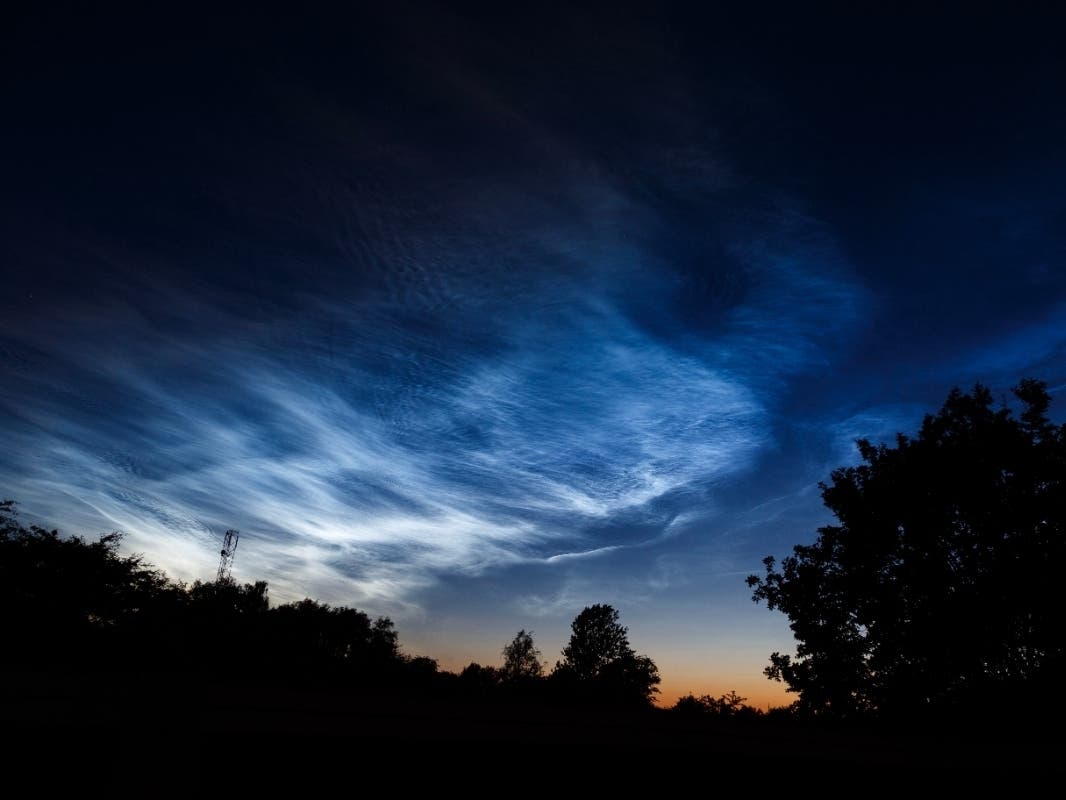Community Corner
Rare Planet Alignment, Supermoon, ‘Electric Blue Clouds’ Star In June
The rare alignment of Mercury, Venus, Mars, Jupiter and Saturn won't be seen until 2040; blue clouds shimmer with solstice after supermoon.

ACROSS AMERICA — Put sky watching on your June to-do list. There’s plenty to wonder about in the heavens his month, including a rare planetary alignment that will occur right after the first of the 2022 run of three consecutive supermoons.
And with the summer solstice later this month comes a chance to see rare noctilucent clouds, sometimes called “electric blue clouds” because of their color, according to the private weather company AccuWeather.
What dates should amateur astronomers bookmark?
Find out what's happening in Across Americawith free, real-time updates from Patch.
The full moon on June 13-14 qualifies as a supermoon, a term coined by astrologer Richard Nolle in 1979 to define a supermoon as a new or full moon that occurs when it is at its closest approach to Earth in a given orbit.
No one paid much attention to Nolle’s definition until 2011, “when the full moon arrived at an exceptionally close perigee, coming within 126 miles (203 kilometers) of its closest possible approach to Earth," Joe Rao wrote for Space.com.
Find out what's happening in Across Americawith free, real-time updates from Patch.
The July and August full moons also meet Nolle’s definition. Patch will have more about those full moons when they get closer, but before we move on to the stunning planetary alignment, one last thing about the June supermoon:
Early indigenous populations named the moons to track the seasons. The June full moon is known as the full strawberry moon, so named by the Algonquin, Ojibwe, Dakota and Lakota peoples, among others, because it coincides with the ripening of strawberries, according to the Old Farmer’s Almanac.
Ah, Summer! And Blue Clouds!
The astronomical summer officially begins at 5:13 a.m. EDT on Tuesday, June 21. It’s the longest day and shortest night of the year in the Northern Hemisphere. Accordingly, the June solstice marks the start of winter in the Southern Hemisphere.
There’s really nothing to see with the arrival of the solstice, although shadows at noon will be shorter than at any other time of the year.
But keep an eye on the nighttime skies for the electric blue noctilucent clouds, the highest in Earth’s atmosphere, which float about 50 miles above our planet’s surface near the edge of space, which starts at an altitude of 62 miles, according to AccuWeather.
These clouds, formed by ice crystals or dust from meteor smoke, are only visible for a few weeks between the end of May and the start of August. Because they’re so high in the sky, noctilucent clouds are illuminated by the sun long after it has gone to bed on Earth, and appear as blue-white swirls, curls and tendrils that shimmer in the sky.
Ta-Da! Planets Align
One of the most anticipated celestial events of June is the rare alignment of planets that won’t occur again until August 2040, according to AccuWeather.
- You Might Also Like: Why Aurora Borealis Displays Are More Likely Right Now
A procession of planets — in order, Mercury, Venus, Mars, Jupiter and Saturn — will be visible in the predawn hours before the end of the month. The best date to mark is before 5 a.m. local time on June 24, when a crescent moon joins the planetary parade.
Best of all, the planetary alignment is visible without a telescope, though AccuWeather notes that Mercury may be hard to spot because it’s the dimmest of the planets and will be the lowest in the sky.
The alignment begins around mid-month and will only be visible for about two weeks.
What, No Meteors?
And who knows? You may see a meteor or two. There’s no shower expected, but meteors are always flying and several shooting stars an hour are usually visible on any given night, according to NASA.
- You Might Also Like: 2022 Tornado Activity Expected To Be High, But Not Necessarily In Tor nado Alley
The next meteor shower — the Delta Aquariids — doesn’t start until July 12. It runs through Aug. 2, peaking on July 28-29. Mark your calendars for that one, because a new moon means excellent viewing conditions for this shower, which produces about 20 meteors an hour at the peak.
Consider it a warmup act for summer’s main shooting star event, the Perseids, famous for their fireballs. The shower runs July 17-Aug. 24, producing up to 60 shooting stars per hour at the Aug. 12-13 peak.
Get more local news delivered straight to your inbox. Sign up for free Patch newsletters and alerts.